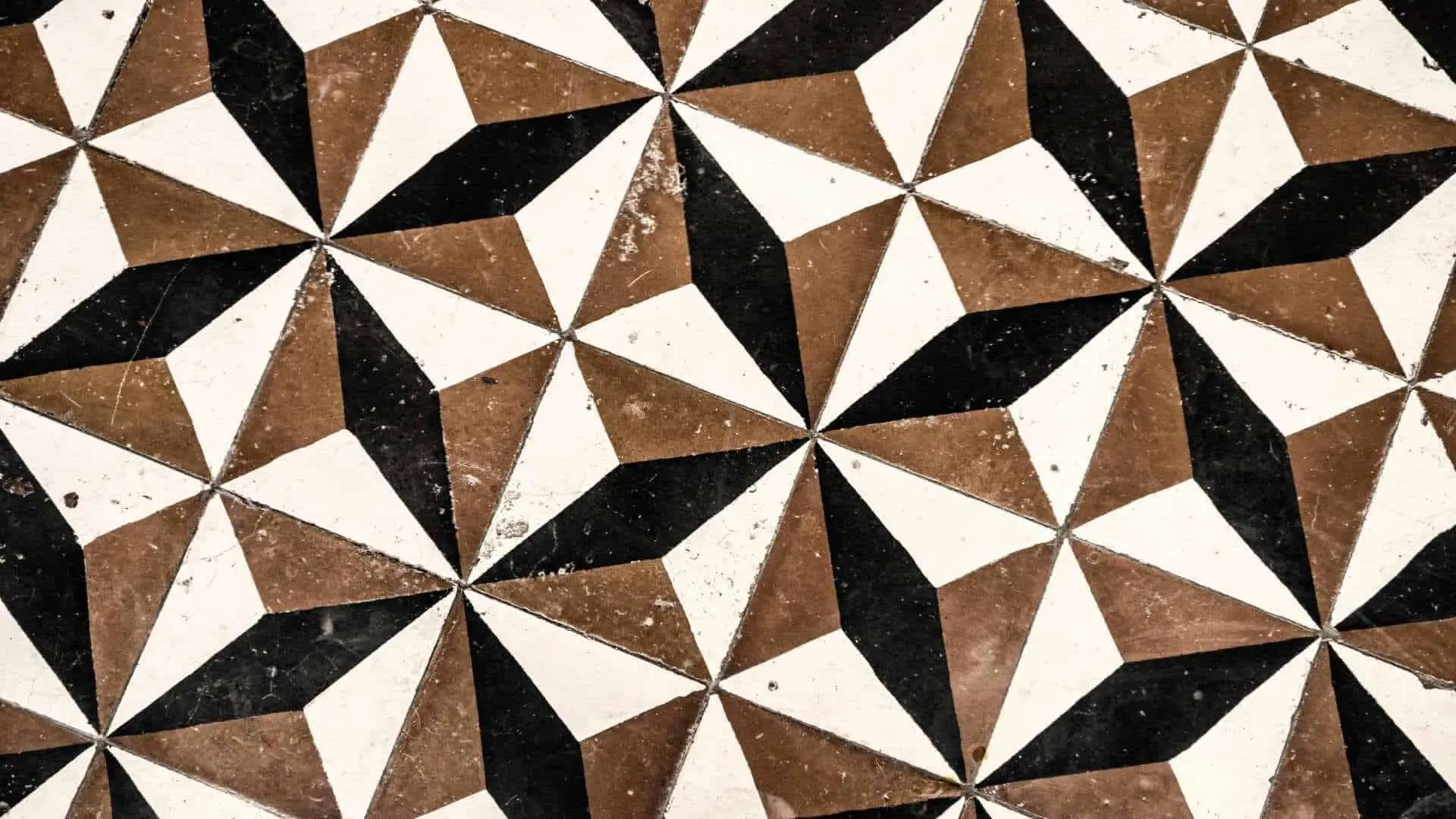A lot of people are ignorant of and misunderstand peel and stick floor tiles as a type of flooring. It’s not as simple as slapping stickers on the floor as some people think.
A strong carpet tile, vinyl tile, or vinyl plank is backed by a self-adhesive floor tile with a high-quality adhesive. It is a great way to quickly and easily transform your floor without spending much money.
Here is how to waterproof peel and stick floor tiles, the first step is cleaning, then grouting and caulking, before finally sealing the floor.
Vinyl flooring has a thickness of 0.3 to 0.5 millimeters and is used for peel and stick flooring, much thicker than wallpaper. One advantage of peel and stick flooring is that it does not require professional installation.
Peel and stick floor tiles are designed to be installed by the homeowner. It’s as easy as peeling off the backing and sticking the flooring to any smooth, clean surface.
Peel and stick flooring is perfect for situations where you need a quick fix or don’t want to spend a lot of money right now. It is also known as Vinyl plank flooring and vinyl tiles.
Related: Is Painting Tile Floors a Good Idea?
How to Waterproof Peel and Stick Floor Tiles
Table of Contents
Even though peel and stick floor tiles are convenient, they are not waterproof, as the seams between the tiles and the lack of glue covering the entire subfloor allow water to leak in.
A self-stick tile floor may be waterproofed with a little more effort; all it needs is filling in the joints and sealing the tile surfaces. Here are a few ways to waterproof peel and stick floor tiles:
Step 1: Cleaning
Use a broom to sweep away loose dirt from the tile, and then wash the area with a rope mop and pH-neutral floor cleanser.
Using clean water, rinse the cleaner out. Allow two hours for the floor to dry.
Step 2: Grouting
Grout should be pressed into the joints between the tiles with the edge of a grout float.
Spread the grout over the tile surface and into the joints with the edge of the float until the grout is level with the tile surface.
After applying the grout, use a damp sponge to wipe away any excess grout from the tile tops. Wait two hours before wiping the tiles clean with a lint-free cloth to remove any remaining grout.
Step 3: Caulking
Silicone caulking should be used to fill the joints between the tile surface and the walls or surrounding surfaces.
Fill the joints with caulk until the caulk is flush with the tile surface. With a damp fingertip, wipe the caulk level. Allow one week for the grout and caulk to dry.
Step 4: Sealing
To increase the waterproofing of the tile and grout:
- Apply a tile and grout sealer to the surface.
- Working in overlapping rows over the floor, apply the sealer to the entire area.
- Allow another 24 hours for the sealer to dry before stepping on the floor.
Read: How to Degloss Ceramic Tiles
Do Peel and Stick Tiles Last?
On average, peel and stick floors endure between five and twenty-five years. In certain circumstances, a few high-quality peel-and-stick tiles last for twenty-five to thirty years.
However, how well they’re installed, how much traffic they get, and whether or not they’re constantly exposed to water determine how long they last. (While some products are authorized for heavier water locations, you may find that avoiding such places extends the life of the flooring.)
The cheapest peel and stick tile is typically thinner than those that cost more than 50 cents per square foot. More delicate tiles wear out faster and are more prone to chip on the edges.
You can still get five years out of the cheap material in a high-traffic region. However, if you want a tile that will last a long time, you should invest in a more expensive tile.
The more expensive vinyl peel and stick tiles survive longer than the less expensive tiles. Vinyl becomes fragile as it ages, making it more susceptible to breaking and chipping.
So getting much longer than that isn’t easy. But a quarter-century is a pretty good run for something that costs 50 cents per square foot.
As mentioned above, excellent installation is essential to get more years out of your peel and stick tiles.
This means that the subfloor is in good condition and is perfectly level before the peel and stick planks are installed.
You will get a lot more life out of a place that is rarely used than you would from a high traffic location, but even in a high traffic area, you will get years of use provided the flooring is installed correctly.
Hence to answer the question, yes, peel and stick floor tiles last a long time. In addition to this, experts in years of tiling have shown that installation, usage, and being able to keep it away from water or moisture will allow your vinyl tiles to last even much longer.
Read: How to Buff a Tile Floor without a Buffer
Conclusion
Peel and stick tile floors are a good form of flooring, but you want to preserve it for as long as possible, hence, waterproofing. This way you can enjoy your floors for longer.
This article was written to give you in-depth knowledge about how to waterproof peel and stick floor tiles.
Regardless of the outcome of your chosen method, we’re pretty sure it would be the right one for you. Good luck!
It is our sincere hope that this article help give you the knowledge you require, if it did, kindly share it across your social media platforms.

